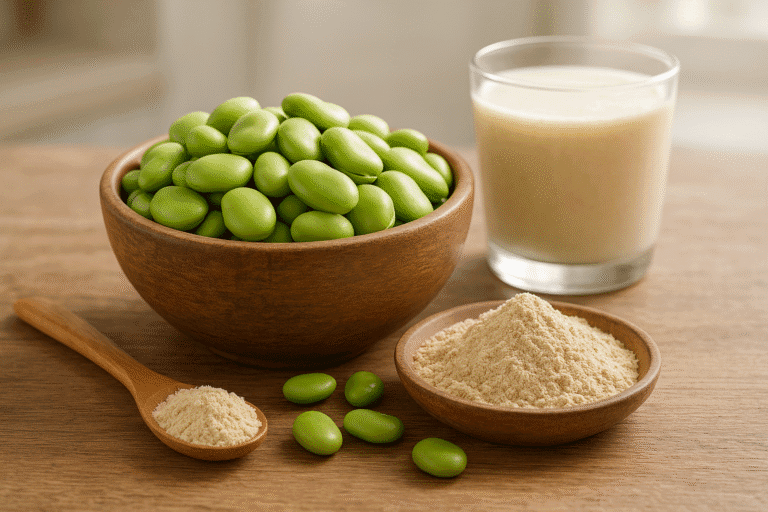Why Chocolate Milk Still Matters to U.S. Health
Many Americans grew up drinking chocolate milk as a tasty treat. But now, with concerns about sugar and obesity, it’s often seen as unhealthy. Yet new research reveals that it can be more than just a sweet indulgence-it may offer real nutritional benefits, especially when chosen wisely.
Summary: Chocolate milk is under new scrutiny-but science shows it can be a smart, balanced hydration and recovery drink when consumed thoughtfully.
What Is Chocolate Milk and How Is It Made?
It is flavored milk made by mixing cocoa (or chocolate powder) with dairy milk, often low‑fat or fat‑free, and a sweetener. Commercial products may include stabilizers, such as carrageenan, to keep cocoa particles suspended evenly (Wikipedia).
It is made by blending cocoa or chocolate powder with milk and a sweetener, then stabilizing it to prevent separation.
Modern insight: Many brands offer versions with reduced sugar or added vitamin D and calcium, making them more nutritionally competitive.

Nutritional Breakdown
Chocolate milk offers:
- Protein: (~8 g per cup) with whey and casein for muscle repair and recovery
- Carbohydrates: fast energy from lactose and added sugar (~25–30 g)
- Electrolytes: calcium, potassium, magnesium support hydration
- Micronutrients: vitamin D, B‑vitamins, calcium for bone and nerve health ResearchGate+2Nevada Dairy+2ScienceDirect+2
Summary: This beverage offers an effective carb‑to‑protein ratio and hydration profile that supports recovery and refueling.
Why Athletes Often Choose Chocolate Milk
Studies show chocolate milk’s ~3:1 carb-to-protein ratio helps with post‑exercise muscle repair better than many sports drinks. A University of Texas study suggests it may perform even better than commercial recovery drinks- plus, it’s cheaper and widely available. Bon Appétit.
Athletes drink it because its natural composition supports fast recovery, muscle repair, and rehydration, often outperforming standard sports drinks.
Pros vs. Cons of Chocolate Milk for 2025 Americans
| Pros (Benefits) | Cons (Limitations) |
|---|---|
| Convenient recovery drink with protein + carbs | Added sugars, potential calorie overload |
| Naturally rich in calcium and vitamin D | May not be suitable for lactose-sensitive individuals |
| Contains electrolytes for hydration support | Some brands use artificial additives |
| Easily available, kid-friendly | Overconsumption can contribute to weight gain |
Expert Tips: How to Include Chocolate Milk Smartly in Your Diet
- Opt for low-fat or fat-free versions with less added sugar.
- Use it as a post-workout or after-exercise drink, not a daily smoothie replacement.
- Pair it with a balanced breakfast, such as oatmeal or whole-grain toast with nut butter.
- For lactose intolerance, choose lactose-free or plant-based chocolate milk alternatives.
Summary: Use it selectively for recovery and nutrition—don’t treat it like an everyday beverage.
Lets Conclude
It isn’t just a sugary treat or a forbidden drink. It can be a smart recovery beverage when consumed in the right context and chosen carefully. With its effective nutrient balance, athletic appeal, and U.S. sports-nutrition backing, it deserves a reevaluation in today’s health-conscious era.
Summary: It offers surprising benefits when used strategically-just mind the sugar, and make choices you can feel good about.
FAQs
Is it healthy to drink chocolate milk?
Yes, when chosen wisely. Low-fat chocolate milk can support recovery, hydration, and bone health-but moderation is key, especially around sugar intake.
How is chocolate milk made?
By mixing cocoa or chocolate powder with milk and a sweetener, then stabilizing it to prevent separation. Commercial versions often include additives to improve texture and shelf life.
Why do athletes drink chocolate milk?
Because it provides a natural 3:1 carbohydrate-to-protein ratio and electrolytes, aiding faster muscle recovery and replenishment.
Is chocolate milk okay for kids?
Yes, in moderation. It delivers calcium, vitamin D, protein, and hydration in a kid-friendly way—but parents should monitor sugar and choose low-fat options where possible.
How much milk should I drink a day?
The amount of milk you should drink each day depends on your age, dietary needs, and overall health goals. However, here are general guidelines based on recommendations from nutrition experts like the USDA and health organizations:
General Daily Milk Recommendations:
| Age Group | Recommended Amount |
|---|---|
| Children (2–3 years) | 2 cups (480 mL) |
| Children (4–8 years) | 2.5 cups (600 mL) |
| Adolescents (9–18) | 3 cups (720 mL) |
| Adults (19–50+) | 3 cups (720 mL) |
Key Considerations:
- Calcium & Vitamin D: Milk is a primary source for both, supporting bone health.
- Protein & Nutrients: It provides 8 grams of protein per cup, plus potassium, B12, and phosphorus.
- Lactose Intolerance: If you’re sensitive, consider lactose-free milk or fortified plant-based alternatives like almond or soy milk.
- Weight & Calorie Management: Whole milk is higher in fat and calories; low-fat or skim milk may be better for calorie control.
If you’re getting calcium and vitamin D from other sources (like leafy greens, fortified foods, or supplements), you may not need the full 3 cups daily. Always consider your total diet and consult a healthcare provider for personalized guidance.







